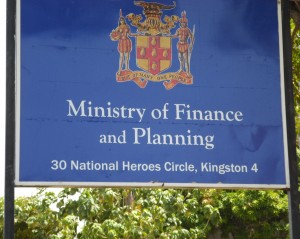Interest on Treasury bills rose again in the latest auction held on 24 July 2013. On offer were two instruments seeking to raise $400,000 each for 91 Days and the other of 182 Days duration. Both instruments were oversubscribed, unlike the auction in June when investors shun the longer dated issues.
In the July auction investors bid $700,977,500 for the 91 day issue and $ 513,898,400 for the 182 Days. The average rates came out at 7.995 percent for the 91 day bill this is up 64.5 basis points over the rate of 7.35 percent in the June auction. The 182 Days instrument came out at an average rate of 7.88 percent 76 basis points higher than the 7.12 percent average out turn in June. Investors however got rates ranging from 6.24999 to 7.84951 percent for the short date bill and 5.99999 to 8.74999 for the longer bill which were allotted in full. The rate reached as high as 7.995 percent for 24.2 percent of the allotment for the 91 day instrument and 9 percent for a very small portion of the 182 day t-bill.











